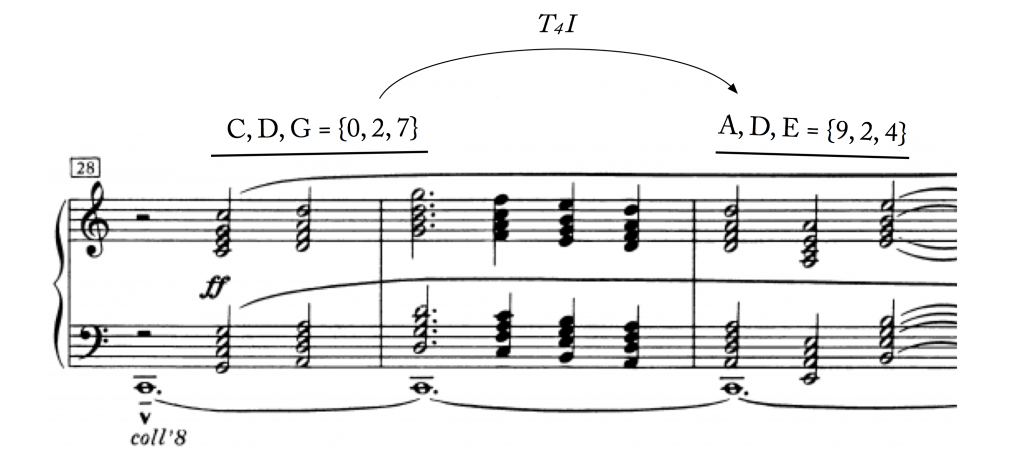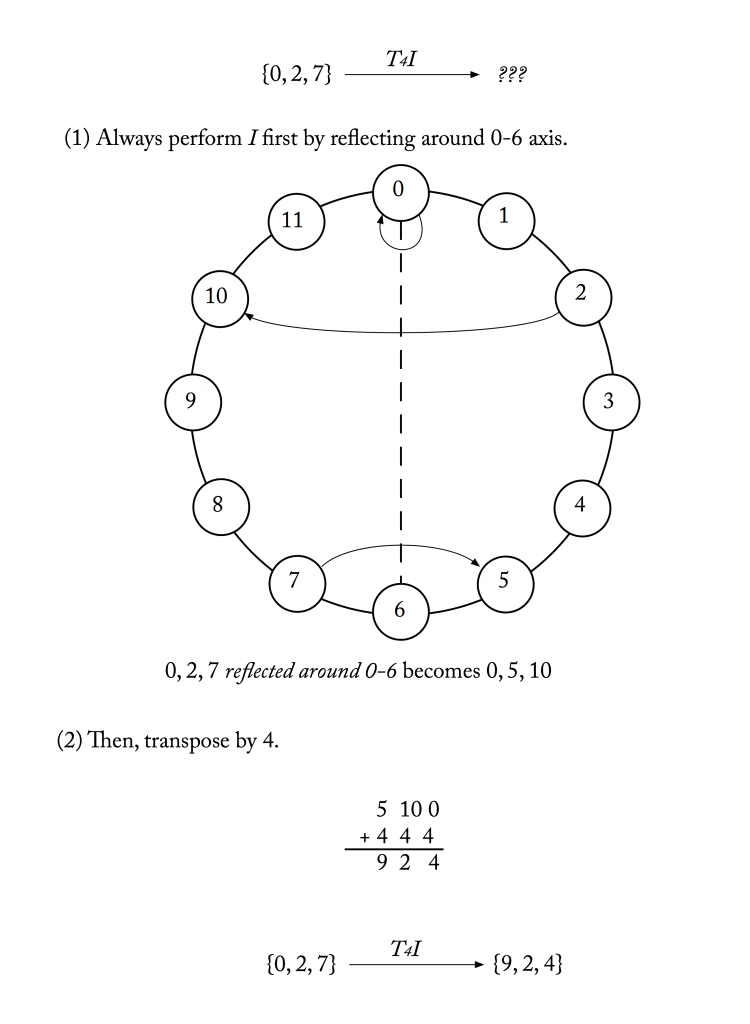Inversion
Inversion, like transposition, is often associated with motion that connects similar objects. You need to be able to (1) invert a collection of pitches and (2) determine the inversional relationship between two collections of pitches.

This passage above from Debussy's "Sunken Cathedral" is an example. Just as was the case in the transpositionally-related passages, these two gestures have the same intervallic content—and so, our ears recognize them as very similar. (Debussy underscores that similarity by giving both of the gestures the same rhythmic setting.) Unlike transposition, however, the interval content of these two gestures is not arranged in the same way.

Both have the same intervals, but the {A,D,E} collection has the +5 on the bottom instead of on the top.
Inverting something is a two-step process, performed in this order: (1) Reflect the pitch classes in an object around the 0-6 axis of symmetry, and then (2) transpose it. I'll illustrate first on a clock, and then show you an easier way:

Fortunately, there is a much quicker way to invert a pitch or collection of pitches! Given any collection of pitch classes and a TnI, simply subtract the the pitch classes from n:

Conversely, to determine the TnI that relates two collections of pitch classes, find a common value to which they all sum. That is the n in TnI:

